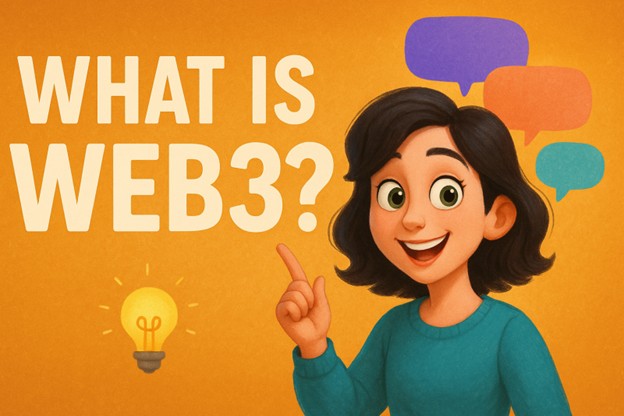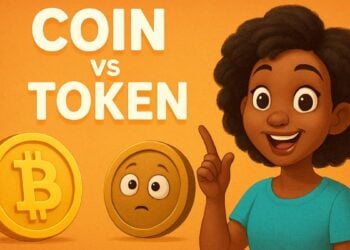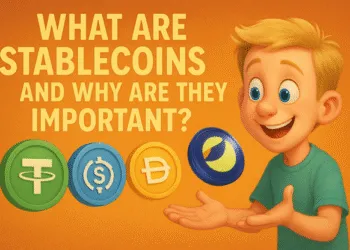The internet is changing again — and this time, it’s all about ownership.
You’ve probably heard the term Web3 thrown around in crypto conversations, tech podcasts, or startup pitches. Some call it the future of the internet. Others say it’s a buzzword. But what does it actually mean?
In short: Web3 is an internet you can own.
Instead of logging in with usernames and passwords, you connect with a crypto wallet. Instead of relying on banks or big platforms, you interact directly with decentralized apps (dApps). No middlemen. No gatekeepers.
But with this new freedom comes new responsibilities — especially when it comes to your security and privacy.
In this guide, we’ll break it down:
- What Web3 really is (without the hype)
- How it compares to Web1 and Web2
- What you can actually do in Web3
- And how to use it safely, without getting scammed
📌 New to crypto? Start with → What Is a Cryptocurrency? A Beginner’s Introduction
From Web1 to Web3: The Evolution of the Internet
To really understand Web3, you first need to see how the internet has changed over the years.
Let’s take a quick trip through the three generations of the web.
- Web1 – The Static Web (1990s–early 2000s)
This was the original internet — slow, static, and read-only.
In Web1, you could visit websites and read content, but you couldn’t do much else. There were no comments, no logins, no social features. Most websites were built by companies or institutions, and users were simply passive consumers.
Think: personal blogs, news sites, early forums. Everything was decentralized in a basic sense — but there was no user interaction.
- Web2 – The Social Web (2004–present)
Web2 changed everything. Suddenly, users could create content, interact with each other, and build entire online lives.
This era brought us Facebook, YouTube, Twitter, Instagram, Uber, Spotify, and TikTok. The internet became dynamic, personalized, and mobile-friendly. It gave rise to influencers, viral content, and global communities.
But there was a price:
Your data, your identity, and your content became the product.
Tech giants like Google, Meta, and Amazon offered free tools in exchange for total control over your data. They track, monetize, and profit from almost everything you do online.
- Web3 – The Ownership Web (Emerging Now)
Web3 aims to reverse that.
Instead of logging in with an email and giving away your data, you connect with a crypto wallet.
Instead of trusting a central platform to manage your account, you interact directly with blockchain-based apps — called dApps.
And instead of being the product, you become the owner.
Web3 is built around ideas like:
- Decentralization
- Token-based economies
- Self-sovereign identity
- Permissionless access
Whether you’re trading crypto, joining a DAO, playing a blockchain game, or minting an NFT — you’re participating in a user-owned internet.
🧠 Fun Fact: In Web2, you are the product. In Web3, you own the product.
So What Is Web3?
At its core, Web3 is an internet that runs on blockchains, not centralized servers.
Instead of signing in with your email and password, you connect with a crypto wallet — like MetaMask or Trust Wallet. This wallet becomes your digital identity, allowing you to access apps, own digital assets, and interact with platforms without needing permission from anyone.
Web3 Is Based on Three Core Ideas:
- Decentralization
No single company or entity controls the network — data is stored and managed by users across the globe. - Ownership
You own your assets, your identity, and your data — all stored in your wallet, secured by your private keys. - Permissionless Access
Anyone can use Web3 apps (called dApps) from anywhere in the world, with no need to ask permission or trust a middleman.
What Can You Do in Web3?
- Trade tokens on decentralized exchanges (DEXs)
- Play games and own your in-game items as NFTs
- Earn passive income by staking crypto
- Join DAOs (Decentralized Autonomous Organizations)
- Mint and sell NFTs without a platform taking a cut
- Access DeFi protocols without needing a bank
💡 Pro Tip: In Web3 you’re also a participant, a stakeholder, and often a co-owner.
Web3 isn’t just a technology shift — it’s a mindset shift.
It redefines how we interact with the internet, how we protect our assets, and how we build digital communities.
Why Everyone’s Talking About It
Web3 is a conversation about freedom, ownership, and the future of the internet.
After years of giving away data to social networks and relying on banks, platforms, and governments to manage our digital lives, many people are starting to ask:
What if I could own my online identity, my money, my content — without trusting anyone?
That’s the promise of Web3.
It offers:
- Financial inclusion for the unbanked
- Data sovereignty for creators and users
- Decentralized communities with shared governance
- Transparency through open-source code and public blockchains
And that’s why so many are excited — from crypto investors to developers, artists, gamers, and even Fortune 500 companies.
Web3 – Pros & Cons at a Glance
| ✅ Pros | ⚠️ Cons |
| You control your assets and identity | No recovery if you lose your private keys |
| No intermediaries, no censorship | Scams and phishing are common |
| Global, open access (anyone can join) | Interfaces can be complex for beginners |
| Real ownership of digital goods (NFTs) | Regulation is unclear in many countries |
| Earn income through staking, DAOs, etc. | Many dApps are still in beta or experimental |
But Web3 isn’t perfect.
It’s still early, complex, and sometimes risky.
There’s no customer support. No password reset. No refund button.
You’re in control — which means you’re also responsible for keeping your wallet, private keys, and funds secure.
The Risks of Web3 (And How to Stay Safe)
With great power comes great responsibility — and Web3 is no exception.
When you take control of your assets and data, you also take on full responsibility for your security. There’s no “forgot password” button, no customer support hotline, and no bank to call if something goes wrong.
Here are the main risks every Web3 user should know:
- Losing Your Private Key
If you lose access to your wallet’s private key or seed phrase, you lose access to your funds — permanently.
There’s no backup. No recovery. That’s the trade-off for being your own bank.
📌 Learn more: What Happens If You Lose Access to Your Wallet?
- Phishing and Fake dApps
Scammers often create fake websites or wallet pop-ups to trick users into giving away their seed phrase.
One wrong click can drain your wallet in seconds.
⚠️ Rule #1: Never, ever share your seed phrase — not even with support teams.
- Smart Contract Exploits
Not all Web3 apps are secure. Some dApps may contain vulnerabilities or hidden backdoors.
Always check audits, community feedback, and do your own research.
💡 Pro Tip: Use tools like DappRadar to evaluate the safety of a project.
- How to Stay Safe in Web3
- Use hardware wallets for long-term storage
- Keep your seed phrase offline, in multiple secure locations
- Bookmark official dApps and avoid clicking random links
- Double-check permissions before connecting your wallet
- Use two-factor authentication on wallets and exchanges (when possible)
Web3 FAQs
Is Web3 the same as crypto?
Not exactly. Crypto is the fuel, Web3 is the machine.
Web3 refers to the decentralized internet built on blockchains, while crypto (like ETH, BTC, MATIC) powers the apps and transactions within it.
Do I need crypto to use Web3?
In most cases, yes. You’ll usually need a small amount of the blockchain’s native token (e.g., ETH on Ethereum) to pay gas fees and interact with apps.
Is Web3 safe to use?
It can be — but only if you understand the risks. Web3 puts you in full control, but that means you’re also responsible for securing your wallet, protecting your private key, and avoiding scams.
Can I use Web3 without a wallet?
No. Your wallet is your login, identity, and vault in Web3. Without it, you can’t access dApps or interact with blockchain-based services.
Is Web3 really decentralized?
In theory, yes — but in practice, some projects are more decentralized than others. Always check how much control the developers or platform still hold.
Final Thoughts: Web3 Is Freedom — But It Comes with Responsibility
Web3 has the potential to reshape the internet — putting control, ownership, and privacy back into the hands of users.
No more relying on big tech to hold your data. No more asking permission to use financial services. No more intermediaries standing between you and your digital life.
But with that freedom comes a clear message:
You are now in charge.
And that means protecting your wallet, learning how the system works, and staying informed.
This is the beginning of a more open, user-owned internet — and you’re still early.

















